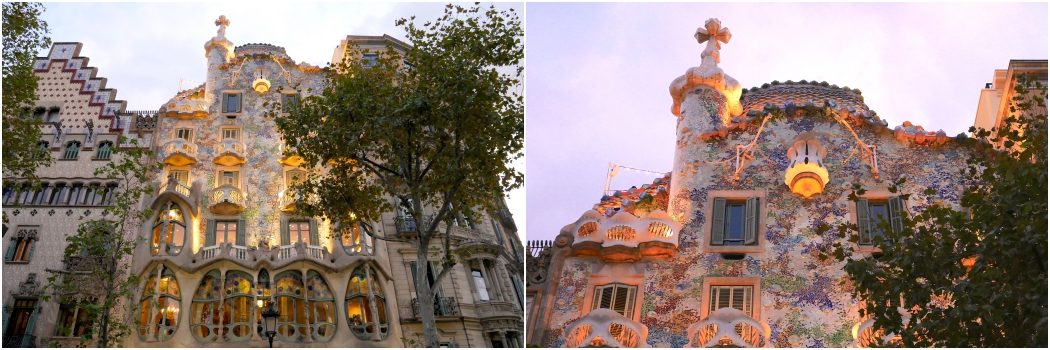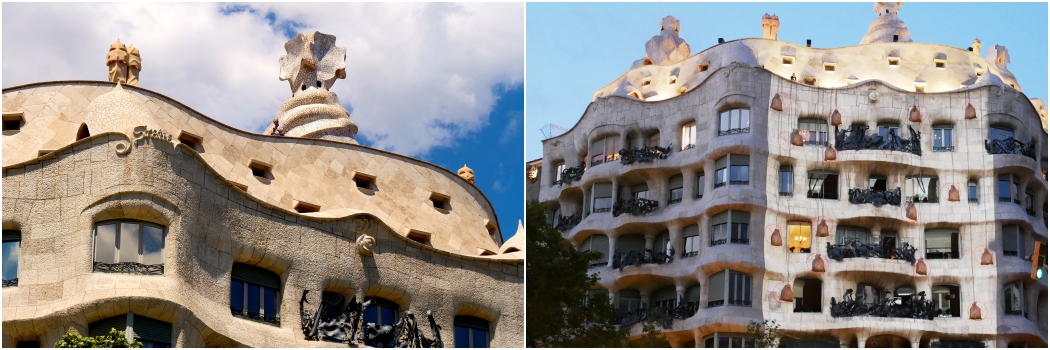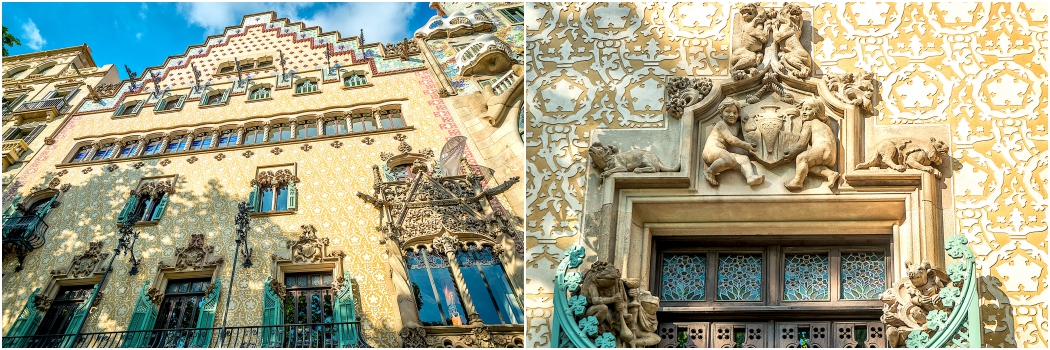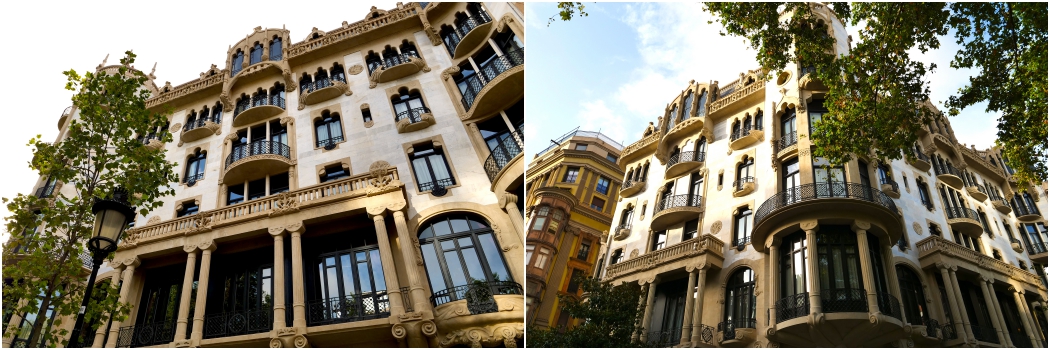This website uses cookies so that we can provide you with the best user experience possible. Cookie information is stored in your browser and performs functions such as recognising you when you return to our website and helping our team to understand which sections of the website you find most interesting and useful.
CATALOGED BUILDINGS IN PASEO DE GRACIA

Along the Passeig there is a large number of buildings that for their originality, beauty and history are part of the cultural heritage of the city.
For this reason, we want to show you some of the most beautiful and important:
World Heritage Site
The Passeig de Gràcia has a virtually unique fact in the world: the same street houses two buildings cataloged by UNESCO as World Heritage of Humanity and which are also made by the same architect, Antoni Gaudí. We talk about Casa Batlló and Casa Milà, popularly known as La Pedrera.
Casa Batlló is located at number 43 Paseo de Gracia and it reflects all the originality and creativity of Gaudí. Many of the architectural and ornamental forms of the building are inspired by his passion for nature. Without a doubt, the “trencadís” technique decorates part of the façade and the interior of the building and its placement was directed by Gaudí himself from the Passeig. As an example of the architect’s expertise, if you visit the interior courtyard, you will see how the blue colors that decorate its walls and the upper skylight cause the sensation of being in an underwater cave. Since 2005 it is part of the UNESCO World Heritage.

Casa Milà is located at number 92 Passeig de Gràcia and was built between 1906 and 1910, the result of an order from Pere Milà, a wealthy businessman from Barcelona who dreamed of a house with innovative design and great detail. Like Casa Batlló, “la Pedrera” belongs to Gaudí’s naturalistic stage, which is reflected in its undulating forms, which broke with the classic architectural rigidity of the time. To the spectacular ornamentation that decorates the house, where the stone and the “trencadís” have a special role, we must add the religious symbolism provided by the architect, a fervent believer.

Monuments of national interest
Casa Amatller: located next to the Casa Batlló, it was built by Josep Puig i Cadafalch between 1898 and 1900. The idea of the architect was to create a building in Catalan Gothic style reminiscent of the Netherlands, a detail that can be seen in the Superior scaling of the facade. It was built as a residential building for Antoni Amatller, an industrialist of the time. Together with Casa Batlló and Casa Lleó Morera they form the popular Illa de la discòrdia (block of discord), due to the professional rivalry maintained by the three architects who built them, Gaudí, Domènech i Muntaner and Puig i Cadafalch himself.

Casa Lleó Morera: located at number 35 of Passeig de Gràcia and built by Lluís Domènech i Muntaner between 1902 and 1905, it’s considered one of the best works of modernist architecture. To decorate the interior and exterior of Casa Lleó Morera, the architect required more than 40 sculptors and master craftsmen who worked on it to give it an exceptional ornamental richness, highlighting the “sculptor of modernism” Eusebi Arnau, who worked on the sculptures of the facade, not visible today because of a later restoration.

Casa Fuster: Converted into the current Hotel Casa Fuster, the building is located at number 132 of Passeig de Gràcia and was built by Lluís Domènech i Muntaner between 1908 and 1911, becoming one of the last architectural works he carried out in the city . The new building has a modernist style with neo-Gothic elements and a floral decoration that is reflected in its more than 300 capitals, all of them different. The use of white and red marble, denotes a more austere and robust, if we compare it with the color and shapes of Gaudí’s works.


